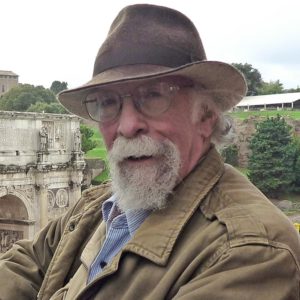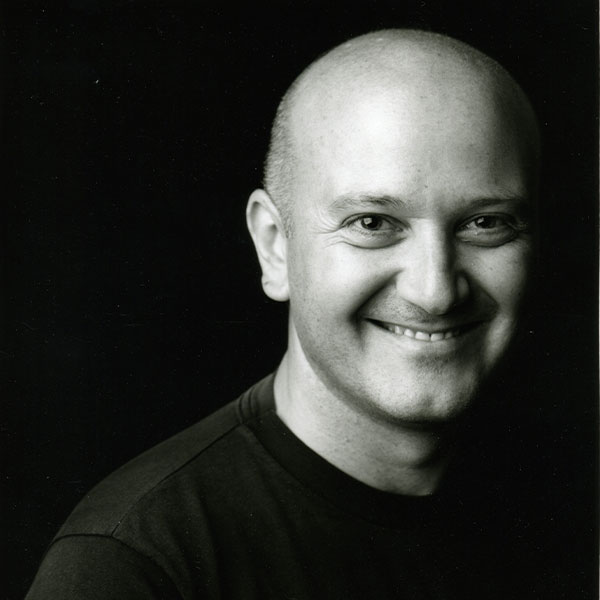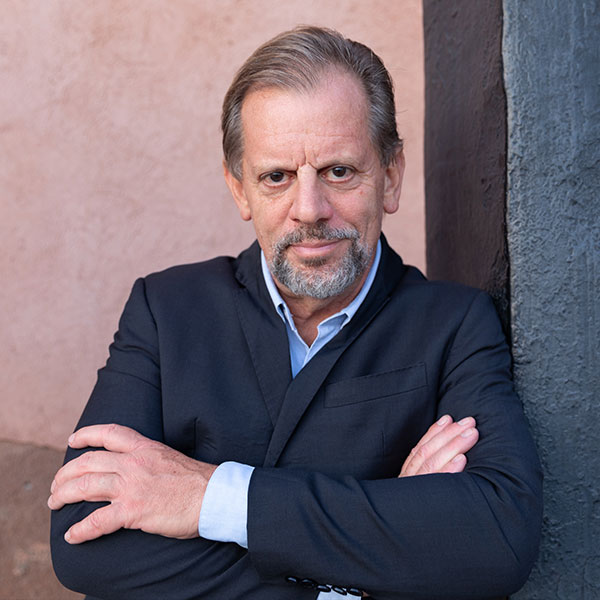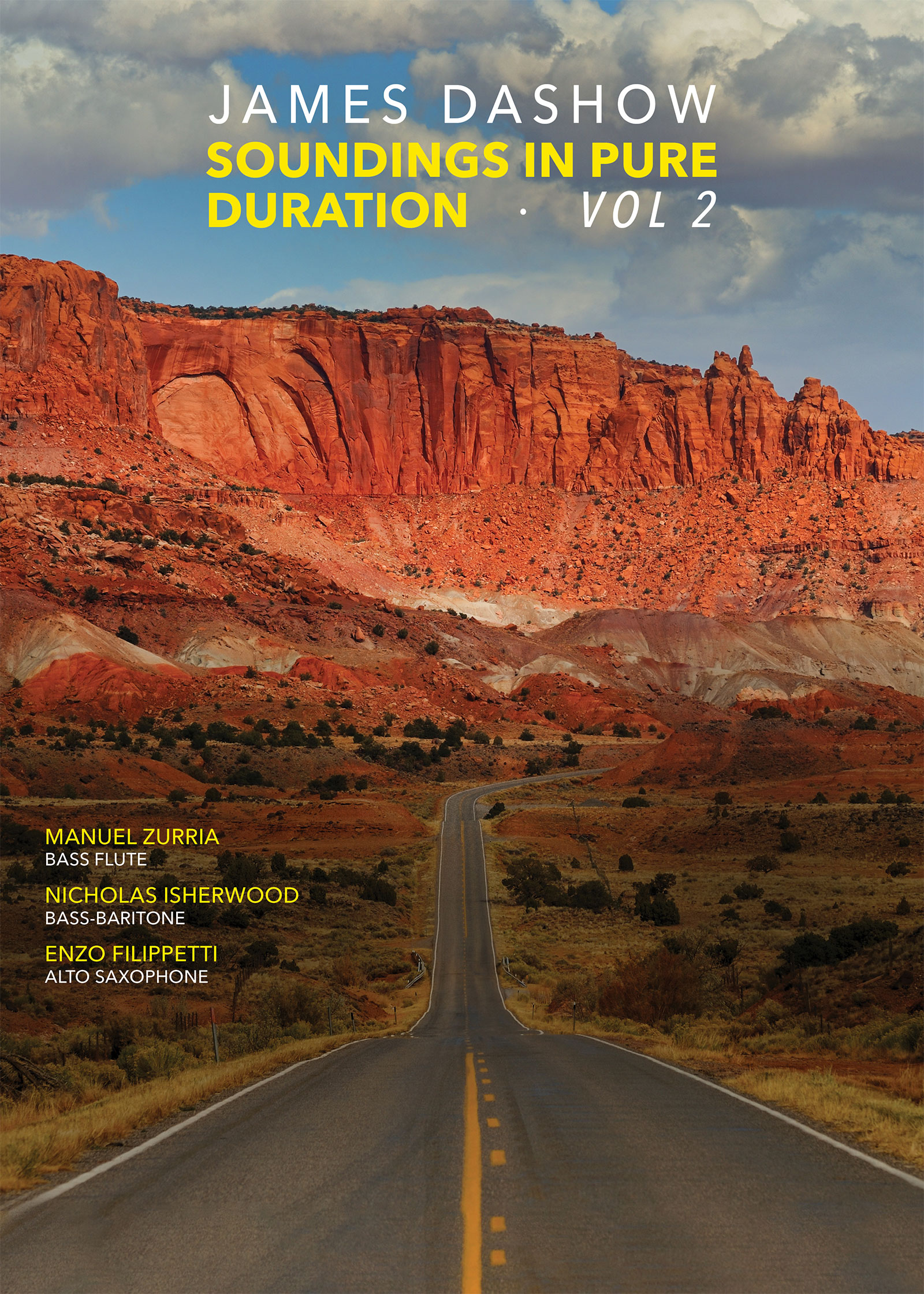Soundings in Pure Duration Vol 2
James Dashow composer
Manuel Zurria bass flute
Nicholas Isherwood bass-baritone
Enzo Filippetti alto saxophone
The second volume of James Dashow’s SOUNDINGS IN PURE DURATION offers listeners a unique audiophile experience. The album of Dashow’s music for electronic sounds and instrumental soloists includes the last four works in the Soundings in Pure Duration series as well as the re-release of his Bourges Magisterium prizewinning work …at other times, the distances. The album is available on DVD, giving listeners access to surround-sound (5.0) mixdowns of the pieces as well as composer-prepared stereo mixdowns that have been spatially enhanced to approximate a wider audio field. According to Dashow, this presentation of his octophonic and quadraphonic electronic music is second only to a live concert performance in terms of realizing his artistic vision for the music.
Listen
Stream/Buy
Choose your platform
"he is as capable and as confident in his electronic world as was Berlioz in his instrumental one"
"each piece is a world in its own right"
Track Listing & Credits
| # | Title | Composer | Performer | |
|---|---|---|---|---|
| Surround-sound 5.0 mixdowns | ||||
| 01 | Soundings in Pure Duration N.9 | James Dashow | Manuel Zurria, bass flute; James Dashow, octophonic electronic sounds | 13:23 |
| 02 | Soundings in Pure Duration N.8 | James Dashow | Nicholas Isherwood, bass-baritone; James Dashow, octophonic electronic sounds | 14:36 |
| 03 | Soundings in Pure Duration N.7 | James Dashow | Enzo Filippetti, alto saxophone; James Dashow, octophonic electronic sounds | 11:09 |
| 04 | Soundings in Pure Duration N.10 | James Dashow | James Dashow, octophonic electronic sounds | 37:03 |
| 05 | ....At Other Times, The Distances | James Dashow | James Dashow, quadraphonic electronic sounds | 12:35 |
| Stereo mixdowns (DVD only) | ||||
| 06 | Soundings in Pure Duration N.9 | James Dashow | Manuel Zurria, bass flute; James Dashow, octophonic electronic sounds | 13:23 |
| 07 | Soundings in Pure Duration N.8 | James Dashow | Nicholas Isherwood, bass-baritone; James Dashow, octophonic electronic sounds | 14:36 |
| 08 | Soundings in Pure Duration N.7 | James Dashow | Enzo Filippetti, alto saxophone; James Dashow, octophonic electronic sounds | 11:09 |
| 09 | Soundings in Pure Duration N.10 | James Dashow | James Dashow, octophonic electronic sounds | 37:03 |
| 10 | ....At Other Times, The Distances | James Dashow | James Dashow, quadraphonic electronic sounds | 12:35 |
TRACKS 1-3 / 6-8 (DVD)
Created between 2014-2017.
Recording, editing, mixing James Dashow
TRACK 4 / 9 (DVD)
Created 2020
TRACK 5 / 10 (DVD)
Created 1999; 2nd Prize Musica Nova ‘99 Prague, November 1999; Magisterium Prize at the 27th International Competition of Electroacoustic Music and Sonic Art in Bourges, France, 2000
The DVD contains surround 5.0 mixdowns (tracks 1-5) from the octophonic and quadraphonic originals as well as stereo mixdowns (tracks 6-10) from the originals. The listener may choose at the very start of the disc which format is to be listened to. There is no subwoofer track; the 5 surround channels will be best listened to on 5 full range loudspeakers.
All works © copyright James Dashow (S.I.A.E.)
All works were created in the composer’s studio. Live soloists were also recorded in the composer’s studio.
Art et Al. by Stephen Dobyns, used by permission of the poet.
Mastering Engineer Brad Michel
Liner notes by Egidio Pozzi
Booklet cover photo Tim Murphy / Shutterstock
DVD authoring by Andrew Gurian
Executive Producer Bob Lord
Executive A&R Sam Renshaw
A&R Director Brandon MacNeil
VP of Production Jan Košulič
Audio Director Lucas Paquette
VP, Design & Marketing Brett Picknell
Art Director Ryan Harrison
Design Edward A. Fleming
Publicity Patrick Niland, Aidan Curran
Content Manager Sara Warner
Artist Information

James Dashow
James Dashow has had commissions, awards and grants from the Bourges International Festival of Experimental Music, the Guggenheim Memorial Foundation, Linz Ars Electronica Festival, the Fromm Foundation, the Biennale di Venezia, the USA National Endowment for the Arts, RAI (Italian National Radio), the American Academy and Institute of Arts and Letters, the Rockefeller Foundation, Il Cantiere Internazionale d’Arte (Montepulciano, Italy), the Koussevitzky Foundation, Prague Musica Nova, and the Harvard Musical Association of Boston. In 2000, he was awarded the prestigious Prix Magistere at the 30th Festival International de Musique et d’Art Sonore Electroacoustiques in Bourges.

Manuel Zurria

Nicholas Isherwood

Enzo Filippetti
Notes
Volume 2 of James Dashow’s series of works, Soundings in Pure Duration for electronic sounds, with and without instrumental soloists, includes the last four works in the series, composed between 2014 and 2020, and the re-release of his Bourges Magisterium prizewinning work “…at other times, the distances,” an earlier work from the 1990s. The general title of these pieces comes from the English translation of a phrase by Bergson (in The Creative Mind) where the philosopher was describing his notions about time and the profound human interaction with it. Unlike the original French, the English has the play on the word “sounding” which, in its double meaning related especially to time (duration), struck the composer as being a perfect description of what a musical work does.
All of the pieces here collected are originally for octophonic electronic sounds, except for the earlier “…at other times, the distances” which is a quadraphonic composition. On this DVD, the listener can find surround-sound (5.0) mixdowns as well as composer-prepared stereo mixdowns that have been spatially enhanced to approximate a wider audio field, consonant, somewhat, with the original spatial configuration—a configuration that, in concert, reveals itself to be fundamental to each work’s compositional conception. As Dashow has often written, controlling Movement IN Space and the Movement OF Space are now basic elements of his compositional approach, in functional collaboration with timbre, dynamics, and pitch/frequency structure. This latter aspect is realized using a rigorous, but not overly rigid, application of the composer’s Dyad System which offers Dashow the means to work within a time-varying complexity of multiple structural levels that correspond precisely to his unique way of hearing, i.e. his distinctly individual harmonies, lines, counterpoint and, above all, timbral conceptions. The pieces are in the order of a concert presentation, rather than chronological, encouraging the listener to listen to all of the pieces from track 1 to the end. Each piece with a soloist has its electronic timbral qualities chosen to enhance or contrast with the characteristics of the particular instrument. The pieces for electronic sounds alone are self-contained timbral-spatial constructions that elaborate their own kinds of sounds.
— Egidio Pozzi, Department of Humanistic Studies, University of Calabria, Italy

